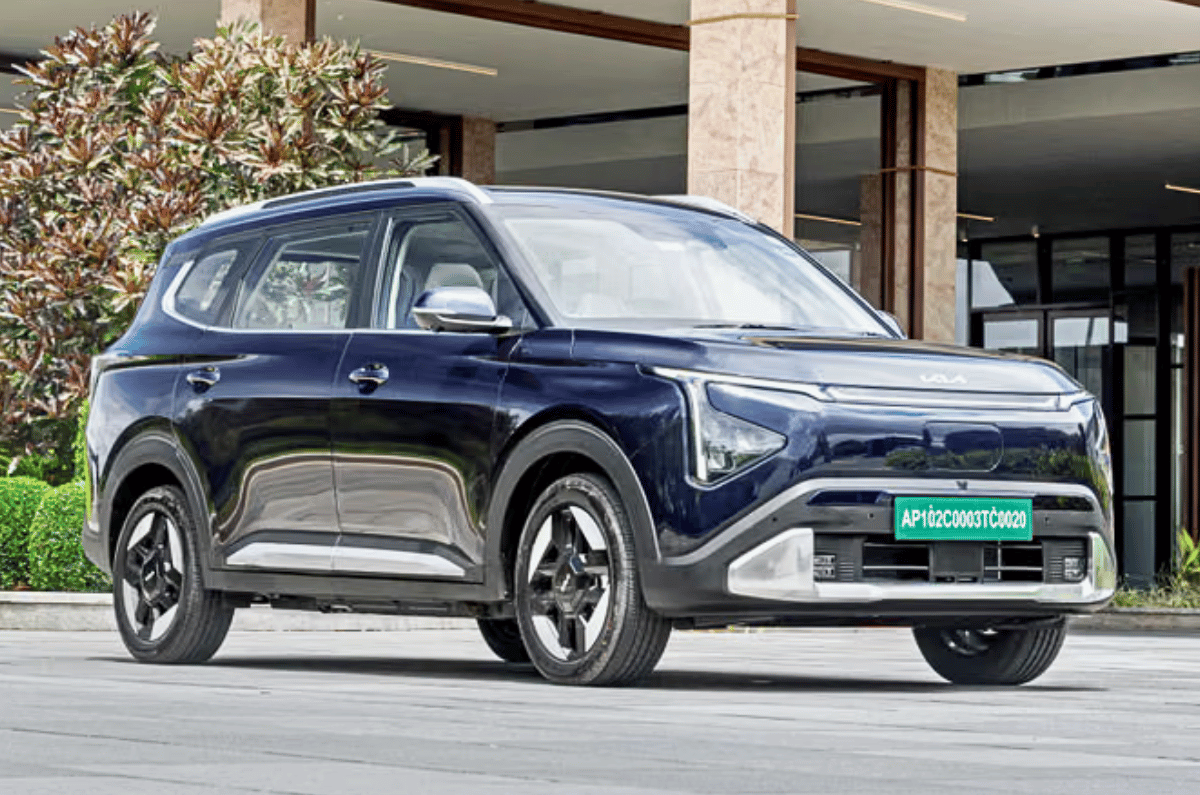
Kia India launched its first mass-market electric vehicle – the Carens Clavis EV – in July 2025. Sold alongside the ICE Carens and Carens Clavis MPVs, the electric version suits buyers who want an EV with regular use of all three rows. In case you are planning to buy the electric Clavis, here are its key strengths and weaknesses to help you decide.
Comfortable and well-finished interior
Well-packaged battery, middle row doesn’t have a knees-up seating issue

In addition to easy access, the driver’s seat is comfortable with partial power adjust, while the steering adjusts for rake and reach. A well-packaged battery means that the middle row doesn’t suffer from the knees-up seating issue common in EVs. The bench seats here are split 60:40 and can be slid or reclined; more space can be unlocked as the front passenger seat can be moved forward using the boss mode function. A one-touch powered fold mechanism simplifies entry to the last row, where two average-sized adults can sit in reasonable comfort. Overall, the Clavis EV’s interior has an airy feel.
Well-equipped right from the base model
LED headlights, dual 12.25-inch displays, standard 6 airbags

Kia Carens Clavis EV interior – HTK+ base model.
Since the Carens Clavis EV’s variant line-up starts from the higher-positioned HTK+ trim, and not the HTE, like the Carens petrol/diesel, its base model relatively packs more equipment. The range starting Clavis EV gets LED headlights and fog lights, active grille air flaps, 16-inch aero-optimised alloy wheels, keyless entry, a 12.25-inch touchscreen and a similarly sized driver’s display, 4 speakers, steering-mounted audio controls, paddle shifters for regen and 3 drive modes. 6 airbags, ABS, hill-start assist, TPMS, rear-view camera, front parking sensors and all-wheel disc brakes are standard safety features of the Clavis.
Also see: Kia Carens Clavis EV price, variants, features explained
Brisk performance even with a full load
Takes 8.4 seconds to hit 100kph from rest
![]()
MPVs aren’t typically known for performance, but our Carens Clavis EV review left us pleasantly surprised, especially with the pace of speed buildup. We tested the more powerful 171hp Carens electric with the long-range 51.5kWh battery pack, whose 8.4-second 0-100kph (claimed) time is suitably brisk. Strong acceleration also means overtakes are easy, and even Normal/Eco mode has plenty of poke on tap for daily commutes. Also, the review included a climb up to the Nandi Hills with all 3 rows full, which the electric MPV managed with ease.
| Kia Carens Clavis EV specs | ||
|---|---|---|
| Standard | Extended Range | |
| Battery | 42kWh | 51.4kWh |
| Drive layout | Front, single motor | Front, single motor |
| Power | 135hp | 171hp |
| Torque | 255Nm | 255Nm |
With the Carens Calvis EV’s strong points stated, let us now discuss some of its limitations.
Not ideal for long-distance travel
Returned up to 350km in our test
![]()
While the official range of the Clavis EV long range is 490km, it returned a real-world figure in the region of 320km-350km (depending on the mode) during our test drive. In this case, the inclines led to increased power consumption than usual. Range varies with driving style and the number of occupants, too. Stay tuned, as we will be testing the e-MPV on our efficiency test loop.
| Kia Carens Clavis EV range and charging | ||
|---|---|---|
| Standard | Extended Range | |
| Battery | 42kWh | 51.4kWh |
| Claimed range (ARAI) | 404km | 490km |
| 11kW AC charging (10-100 percent) | 4 hours | 4 hours 45 mins |
| DC charging (10-100 percent) | 39mins | 39mins |
Significantly pricier than ICE Clavis at the top-end
Prices start from Rs 17.99 lakh and go up to Rs 24.49 lakh
You will have to shell out Rs 24.49 lakh (ex-showroom) for the top-spec Carens Clavis EV HTX+ long-range variant. That is a Rs 3 lakh premium over a similarly equipped Carens Clavis turbo-petrol with a DCT. That said, it’s priced much lower than the BYD eMax 7 across the board.
Also see:

